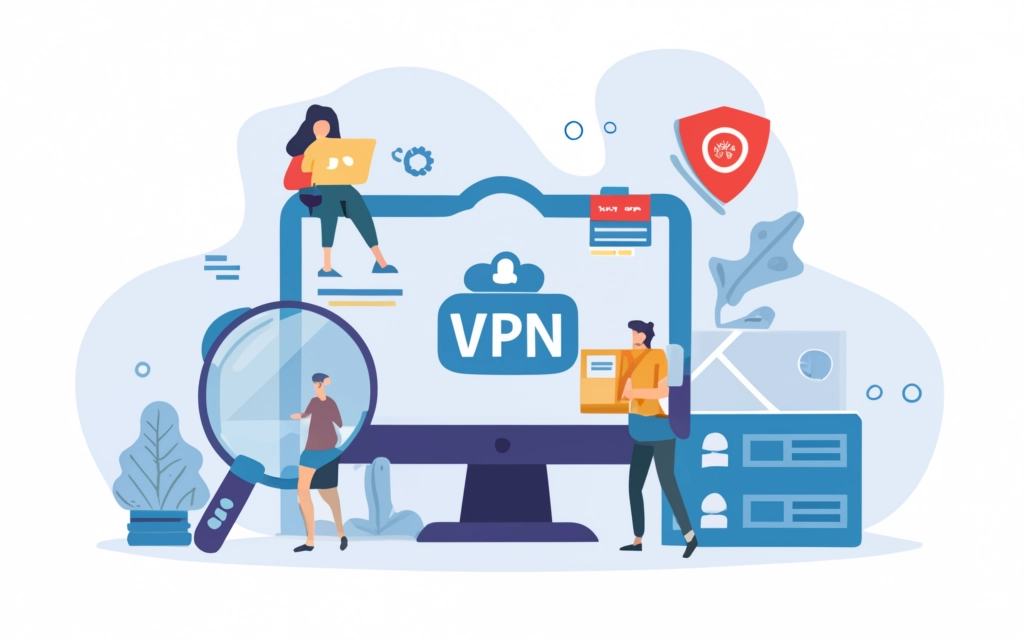How to choose and configure a VPN for small businesses?
Content of the article

Small businesses face numerous data security threats. VPN serves as a reliable tool for encrypting data and creating a secure communication channel between employees and the corporate network. This is especially important for remote workers who need secure access to resources companies. In this article we will look at the key points that will help you choose and configure the right VPN, taking into account the specifics of your business.
All about VPN for small businesses
VPN acts as an intermediary between the user and the Internet, providing data encryption and a secure communication channel. The main stages of VPN operation include:
- Connecting a user to a VPN service using a VPN client.
- Authentication of user credentials on the VPN server.
- User encryption of data using an encryption protocol.
- Creating a safe “tunnel” for data transfer.
- Transfer of encrypted data via the Internet to a VPN server.
- Deciphering data on the VPN server and transferring it to the Internet.
The choice of VPN type depends on the needs and structure of your business. Let's look at three main types:
- Remote access. Ideal for employees working outside the office. Allows you to securely access the corporate network by encrypting all transmitted data. This type of VPN is usually inexpensive and easy to set up.
- Site-to-site. Connects various company offices, allowing them to work as a single network. Suitable for companies with multiple offices, ensuring secure exchange of data and resources. It has two subtypes: intranet VPN (unites the offices of one company) and extranet VPN (connects the networks of different organizations for secure data exchange and cooperation).
- Client access. Similar to a remote access VPN, but used by individual users. Ideal for solo entrepreneurs and remote workers who require secure access to the corporate network.
Steps to set up a VPN for small business
Setting up a VPN for your business includes several important steps:
- Step 1 - Primary preparation. Assess business needs and technical capabilities. Make sure you have a high-speed Internet connection (recommended speed - minimum 25-30 Mbit/s). Determine the number and type of devices used (computers, laptops, mobile devices). Consider the compatibility of the VPN with operating systems (Windows, Linux, MacOS, Android, etc.). Select the required VPN protocol, taking into account the requirements of security, stability and compatibility.
- Step 2 - Prepare VPN devices and components. To set up a VPN, you will need a router, a server, and a VPN client. The provider will usually provide a VPN server and client, but make sure the client is compatible with your devices. Install the VPN client on devices for testing and get additional software if required. For secure work of several employees, use a VPN router.
- Step 3 - Network preparation and configuration. Before installing a VPN, make sure your IT network is configured and remove any unnecessary or outdated VPN client software. This will prevent conflicts. Check how your employees will connect to the Internet (Wi-Fi, 4G, 5G, wired connections) and set up a VPN for all types of connections.
- Step 4 - Select VPN protocols. VPN protocols — these are sets of rules that determine how data is transferred between your device and the VPN server. They can also affect connection speeds and encryption standards for data transmission. Explore different VPN protocols to determine which one is best for your business needs.
- Step 5 - Install VPN software. Choose a VPN provider that meets your requirements and offers compatible client software. Create an account, download and install the VPN client on your devices. Configure admin settings that apply to all devices.
- Step 6 - Testing and Troubleshooting. Test VPN on several devices before mass implementation to identify and eliminate conflicts. Update the OS, reboot the client and device, and make sure other VPN programs are disabled. If necessary, contact your provider's support service.
- Step 7 - Install the VPN client on all devices. After successful testing, install the VPN client on all devices, providing employees with a link to download the software. After installation and testing, select the default VPN server optimally located for your office to improve performance. It is recommended to enable the kill switch feature to prevent an insecure Internet connection in the event of a VPN failure.
Setting up a VPN for small businesses is an important step to ensure data security and protection from cyber threats. By following these steps, you can create a reliable and secure network that will allow your employees to work effectively both in the office and remotely, without fear for the confidentiality of transmitted information.
Private VPN server: makes almost any IT task easier
A private VPN server can greatly simplify the selection and configuration of a VPN for small businesses due to more complete access control and settings, scalability, compatibility with any devices, and ease of use.
You can get additional information, as well as buy a private VPN server on Private VPN server. Here you will also find the FAQ section, where you can get answers to frequently asked questions about private VPN servers and other VPN products , available on the modern digital market of the Russian Federation.